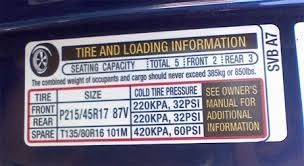Pressure and load index
Tyre pressure is key if you want to get the most out of your vehicle performance as well as keep your tyres alive for a greater period of time. What is fundamental is the influence of pressure on the maximum load capacity. The higher the pressure, the more the load capacity. The reverse is also true.
Correct tyre pressure: stay on the safe side
What is more, correct pressure also helps maintain the tyre in shape and helps distribute the load across the footprint.
Being in line with the manufactuer's recommendation can also be extremely beneficial in other ways too. For example, a correctly inflated tyre helps increase resistance to wear significantly, reduce rolling resistance (a properly inflated tyre will reduce your gaz bills) and longevity.
Tyre Pressure: A direct route to vehicle performance
According to some of the leading specialized magazines, correct tyre pressure is key for vehicle performance. The tests carried out by these magazines show that under-inflated tyres affect steering response and precision negatively.
In one of these tests , two Goodyear Eagle GT-HR High Performance All-Season (reknown for its ressitance to wear) were mounted on two BMW 320D 2008. The first car had adequate tyre pressure. 30 psi in the front, and 37 in the rear while the second car had its tyres underinflated by 30%
This comparative test confirmed that underinflated tyres took longer to respond to steering and were harder to use in corners than properly inflated tyres.
Where can I fin the pressure recommended by the manufacturer?
Optimal pressure, that reflects the manufacturer's recommendations is to be found on the placard of the fuel flap or on the driver's doorjamb :



